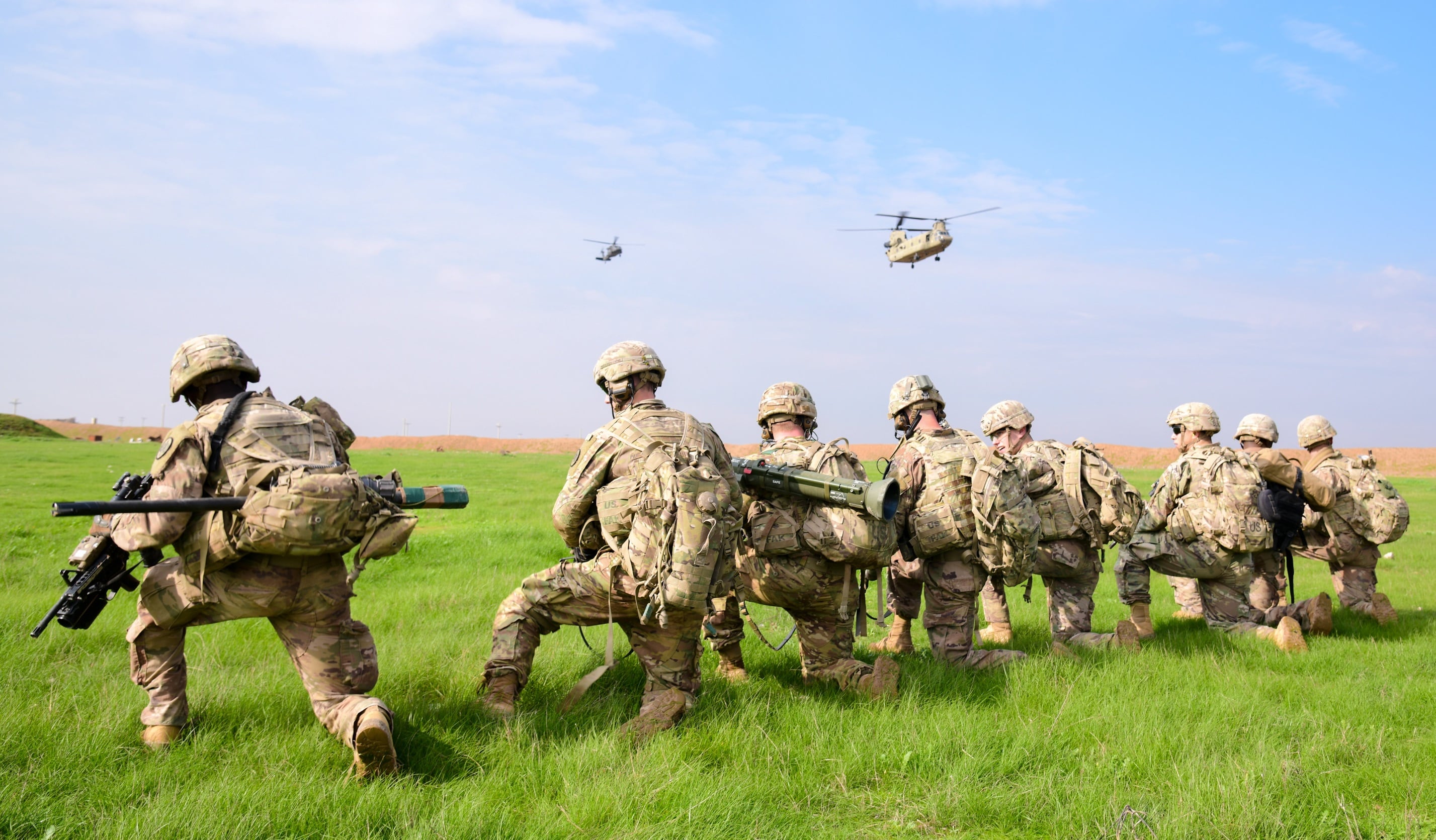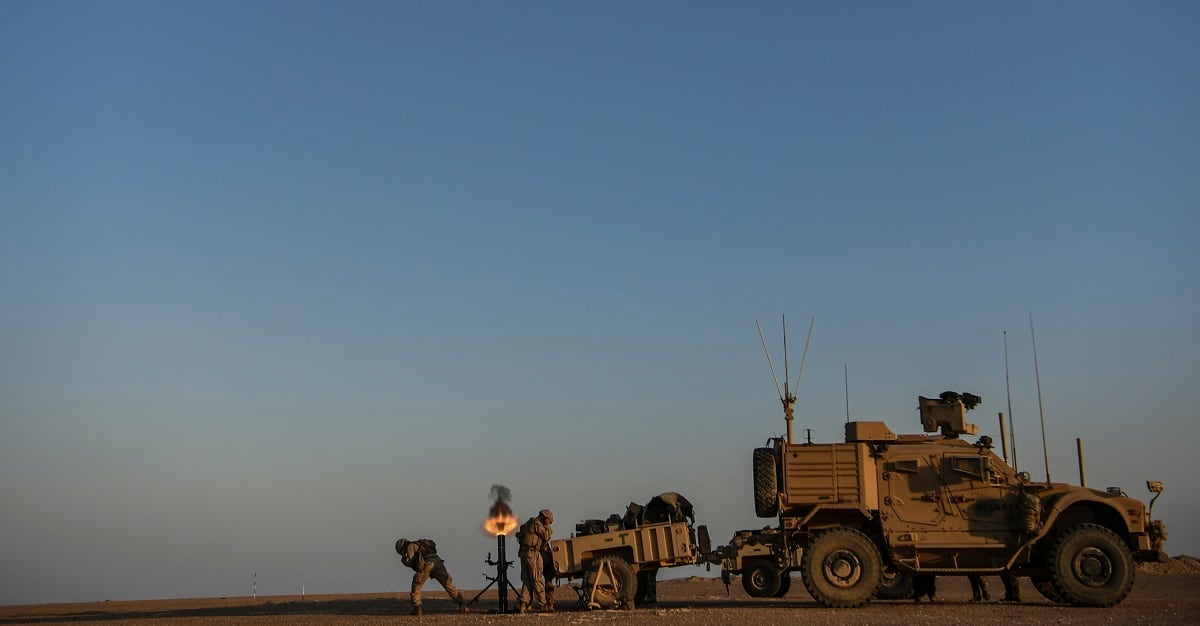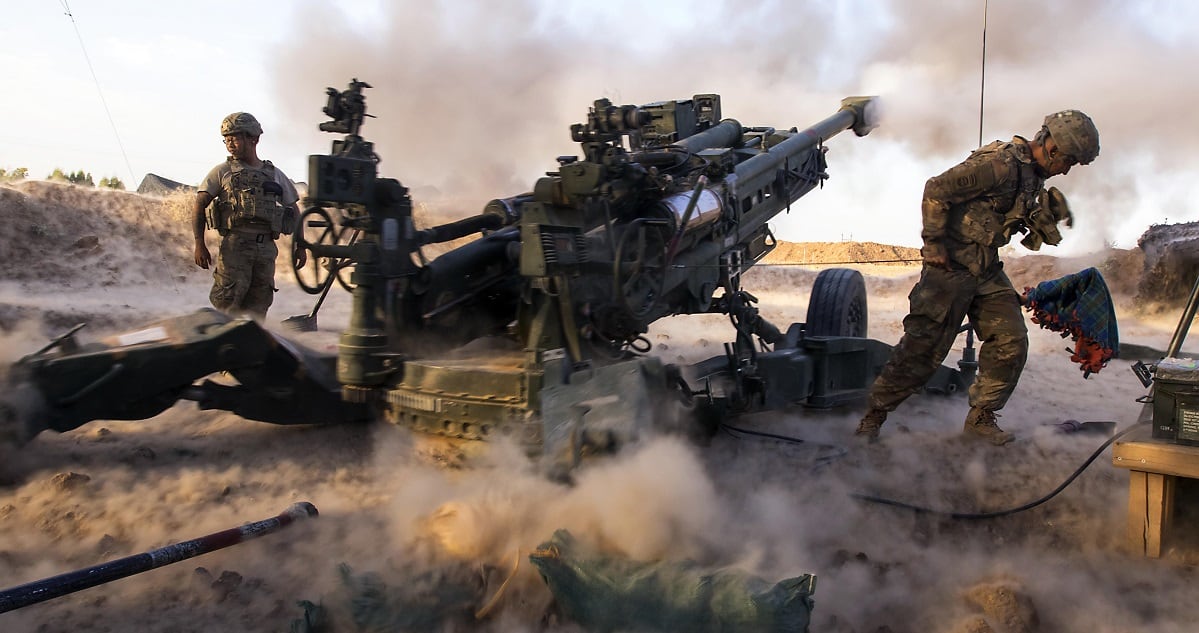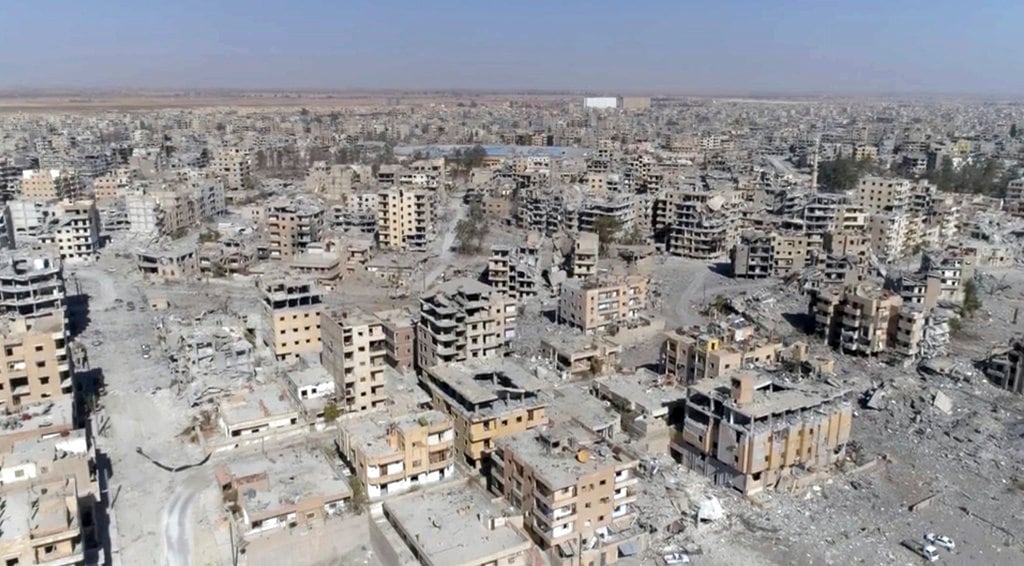The U.S. military’s biggest successes against the Islamic State of Iraq and Syria involved uprooting the militants first from Mosul, Iraq, and then Raqqa, Syria.
But those operations are also catching the most flak for what many human rights groups and international organizations viewed as a callous use of artillery and air power that killed too many civilians.
The battles, as terrible as they were, serve as an important bellwether that may mark a new era of urban warfare involving mega-cities, according to retired Army Maj. John W. Spencer, chair of Urban Warfare Studies at West Point’s Modern War Institute.
“We fail to recognize as a government that cities are the strategic terrain of the future," Spencer said at the Future Security Forum in Washington, D.C., Monday. “After World War II, the global population went from 3 billion to 6 billion in 39 years and they’re all living in cities. The fastest growing cities are the most underdeveloped.”
Spencer introduced a term — feral cities — not in many military leaders’ lexicons, yet something that could be the 21st century equivalent to the failed state. The Pentagon, he said, should be paying attention.
After all, “you can have a feral city within a functioning state.”
Feral cities are major urban sprawls that lack adequate governance. Warlords, gangs or terror groups occupy a maze of concrete that largely blocks GPS links, radio communications and aircraft sensors. U.S. troops are forced to seek and destroy the enemy in an environment filled with sewage, failing infrastructure and even packs of wild dogs.
RELATED

If the U.S. military is to be properly prepared for a fight in this environment, possibly worsened by the effects of global climate change, it should start now. There needs to be a dedicated “urban operations center within the military,” Spencer said.
There are already some efforts underway. The U.S. military published a manual on small unit training in subterranean environments in 2017 — focusing on fights in the subway and sewage systems underneath huge cities. The Army’s Asymmetric Warfare Group has also been pushing training out to soldiers in an effort to spread subterranean warfare knowledge throughout the force.
But Spencer described an endeavor far more comprehensive, involving the Pentagon, other government agencies and universities. A national urban operations institute should be established and major academic institutions should start research on “longevity of conflicts in cities,” he said.
The battles for Mosul and Raqqa, for instance, offer many lessons to be learned.
Spencer compared the U.S.-led international coalition operations in those cities to surgical treatment to remove a cancerous growth — ISIS — with the least amount of harm to the body — a city. The military can remove the growth, but the post-surgical care — rebuilding the city — must be done by a different set of professionals.
The coalition largely sat back and provided fire support to Iraqi and Syrian partner forces during the Mosul and Raqqa fights. In the process, artillery and airstrikes were forced to pepper the cities unceasingly, as ISIS fighters had years to prepare defensive positions.

The campaign in Raqqa, for instance, left “entire city blocks flattened," according to Amnesty International.
“If you’re talking about Mosul and Raqqa, it sounds like we were using chemotherapy and not a knife,” said Sarah Holewinski, who is on the board at the Center for Civilians in Conflict, while using Spencer’s cancer analogy.
Holewinski, who was in Nineveh Governorate, Iraq, two weeks before the Mosul operation started, said the planning for the mission was “woefully inadequate."
In the days leading up to the assault, Holewinski said, military planners were still asking: “Would the population stay or go? Would ISIS use them as human shields? Do we understand the infrastructure that’s there?
“Even the integration with the United Nations was a big mess," she added.
Better preparation would have alleviated some of these issues, but Spencer said that critics who think the U.S. military should have led the fight directly from the front, rather than rely on partner forces, are misconstruing the situation.
“If the U.S. military would have led that operation, as in not ‘by, with and through’ providing the air support and artillery, would it have been less damaging? I’d think no, because of the nature of urban warfare," Spencer said.
When compared to other options — most notably not helping at all — the international coalition didn’t have much of a choice.
“If you’re asking about how to save Raqqa: don’t let it be held for three years,” Spencer said. “Don’t let Mosul be held for four years to where it becomes such a big operation to retake it.”

Once a city is retaken, stabilization becomes a strategic necessity. Otherwise, the government is just allowing the space for gangs, terror groups and other non-state actors to grow again.
But the military can’t do that alone, according to Kelly Uribe, a senior foreign policy analyst within the Pentagon.
“In many places around the world ... it will be U.S. military personnel on the ground perhaps well before and long after a diplomat or USAID civilian" arrives to help, Uribe said.
“Stabilization is a political endeavor involving an integrated civilian process,” Uribe said, pointing to the money wasted on parts of the Afghan conflict over the past 17 years. “What comes after must be integrated. It cannot be the military alone.”
The answer to stabilization is “not necessarily the captain on the ground making the decision," she added. Instead, stabilization should be "well-connected to broader USAID, State Department and political objectives.”
That captain should only be an instrument of those objectives. But even then, it gets tricky.
Finding the right local partner forces, those that are locally legitimate authorities, has been difficult for the U.S. military, and sectarian violence has erupted in the past when the wrong individuals are empowered.
Uribe said that U.S. leaders should be watching partner forces and asking: “Are they peacefully managing conflict or are they repressing?"
Kyle Rempfer was an editor and reporter who has covered combat operations, criminal cases, foreign military assistance and training accidents. Before entering journalism, Kyle served in U.S. Air Force Special Tactics and deployed in 2014 to Paktika Province, Afghanistan, and Baghdad, Iraq.




